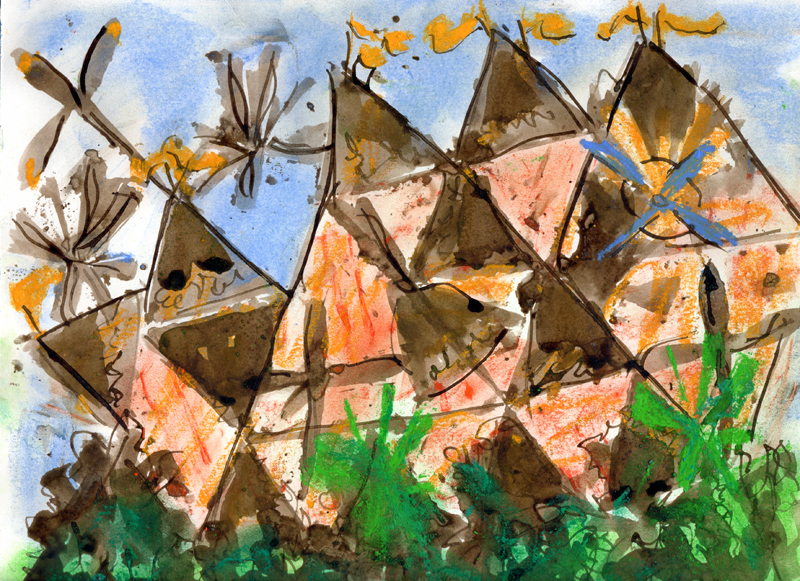Phone conversation
We set up a meeting for Thursday, May 29 at 1 pm where we will talk about making paper, pre-cutting block prints, and generally visualize an emergent process.
Cassidy said that the process we are using is different from starting with a piece of paper and then drawing or painting on it.
I thought that it is important to talk about the process we are using and to develop language for it. We seek clarity in how we are making, and the softer process technology that we use.
Some of the things we mentioned right away are:
This process is open-ended. We can set up a situation and invite people into it, but we cannot get too specific until we see how people respond and what they bestow. Then we respond to that and maybe tweak the situation, and so it will go. Normally, artists are much more in control of the process, but even then, they will adjust and make changes when they see how the materials they use respond to the situation they set up, or how they begin to open to new dimensions in response to being in the process and giving it their attention. So most art ends up being very different from the original concept. But this way of working helps to see the stages clearly.
We decided we want to make records of this process, of listening, watching, and seeing how we respond and how things evolve. So we can share how it became, the stages of its coming to life.
This process offers opportunities to set up the situation to invite participation.
We want to harvest language from the writing that people record in the Bemis scroll set up. We need a name for what people are doing in the Bemis area.
We are thinking about making sturdy stamps using key words that come from these contributions, as they think about the prompt. These stamps would be used during the time we are actually in the Flock House, either inside, or outside in a printing area we set up. We are thinking of a series of stamps that develop during the process that we will use to add visual layers.
The stamps will be better in English, Spanish and other languages.
I am also thinking that we will want to photo and video document all the stages, so that the culminating palimpsest is transparent and can be unpacked by seeing clearly how the layers and stages looked at each level.
I would also like photos and video of many people participating.
Cassidy is thinking deeply about the papermaking. She feels that making it from recycled material is very important. She is wondering if we can make recipes of how to make the paper as part of the project. Her idea is to deconstruct how to do each piece, so that visitors can leave inspired and ready to do their own project. As a transparent and instructive process, it is available to all, just as when they visit there is a way to make part of the palimpsest.
What we are realizing is that the more we put into the pre-Flock house residency period, the more we will have to work with when we actually inhabit it. And the more ready we will be to invite others into the process. We will be ready with lots of stuff.
Some other thoughts I have had –
I am seeing a performance area in the urban meadow at Bemis. So that our Wordsmith poet in the Design group, can be invited to present a poem that could be recorded. And this worked into video footage. This would bring in many voices that are sound and motion. It could become a palimpsest that is a sound track to compliment the visual art.
We both like the idea that in the end, the Flock house is an empty vessel (from Alex), ready for the next project. It is not claimed space, but is completely open to new interpretations. Like a basketball player who is so centered that they can move in any direction 360 degrees. We will leave only footprints.

